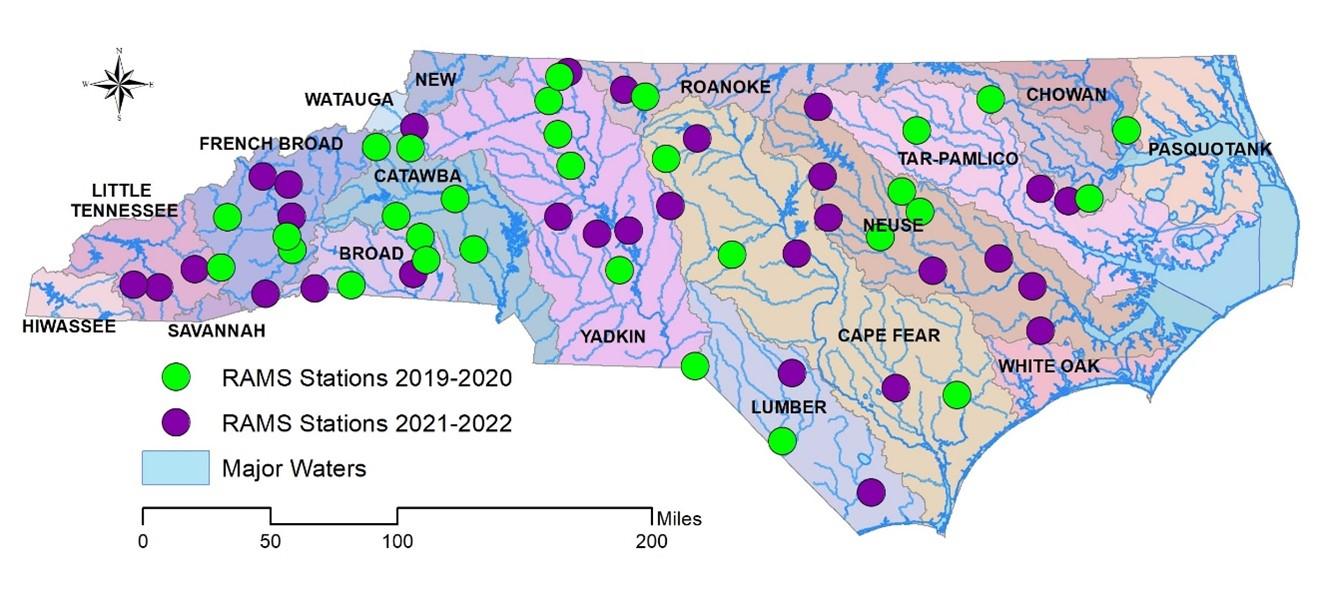Random Ambient Monitoring System (RAMS)
The Random Ambient Monitoring System is a component of DWR's Ambient Monitoring System that was started in January 2007. RAMS is a statewide probabilistic monitoring initiative in which thirty freshwater stream locations are randomly selected and sampled once per month for two years. At the end of the two year cycle the stations are retired and thirty new sampling locations are selected.
The following parameters are collected once per month for a total of 24 times in two years: dissolved oxygen, specific conductance, temperature, pH, alkalinity, chloride, fluoride, sulfate, turbidity, total and dissolved metals, mercury, and volatile organics. The following parameters are collected once every other month for a total of 12 times in two years: cyanide, sulfide, semi-volatile organics, pesticides, and PCBs.
Benefits of RAMS:
- Because most streams in North Carolina are small, the majority of RAMS sites are also on small streams. RAMS data helps to supplement the DWR ambient monitoring network, which has historically focused on large rivers and areas with known water quality problems.
- RAMS allows DWR to collect data on water quality parameters that are rarely examined, and to answer broad questions about the water quality of North Carolina streams with a statistical rigor that had not been possible before.
- RAMS data may be used to develop and evaluate methods of measuring water pollutants.
Random Ambient Monitoring Stations

Staff Contacts
| David Huffman | Ambient Monitoring System Coordinator | 919.743.8416 |
| Susan Gale | Water Quality Analyst | 919.743.8408 |
